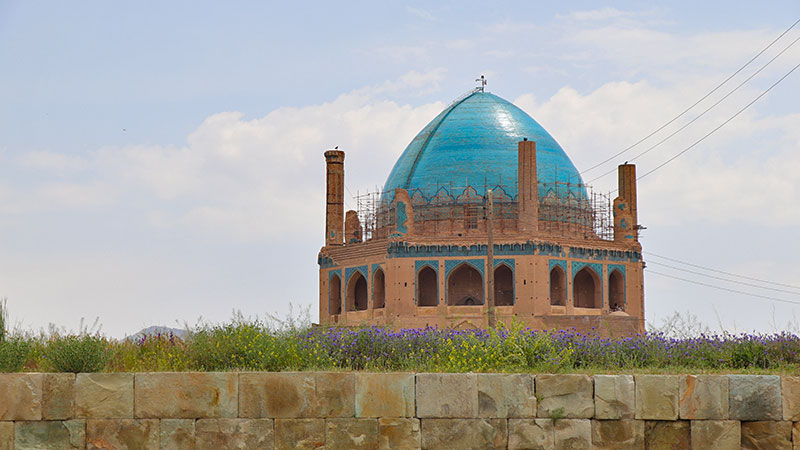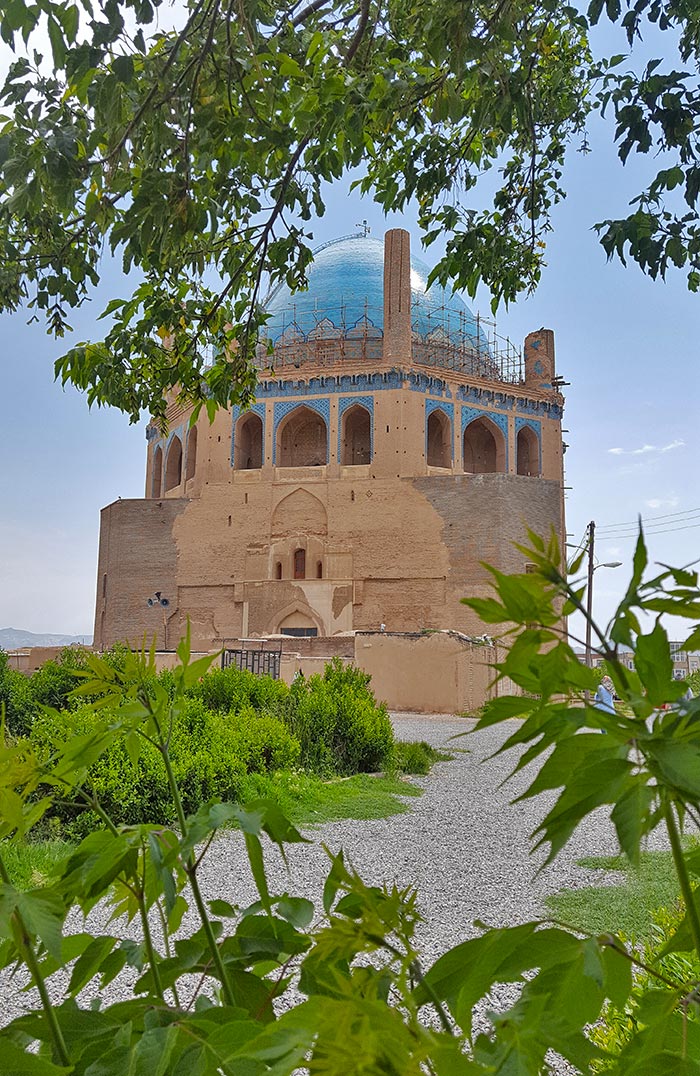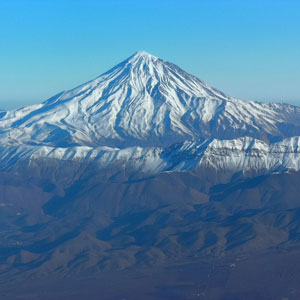 Signin with Google
Signin with Google Signin with Facebook
Signin with Facebook
 Places,History
Places,HistorySoltaniyeh Dome Pictures the Blue Taj Mahal in Iran

Soltaniyeh dome is a jewel of Persian and Islamic architecture that UNESCO has enlisted its ensemble in the list of World Heritages. It brings us back to a time when Mongols ruled over Persia. Between the great Sassanid Empire and the Safavid era, the descent of Genghis Khan established their sovereignty over this part of the world for about one hundred years. Oljaytu, the 8th Ilkanid ruler then established the capital of its dynasty in the green and fertile lands of Zanjan. Soltaniyeh, "the city of Sultans", became the centre of power of this Mongol kingdom. Along with Tabriz, this glorious city became a major trading city centre on the famous Silk Road.
Unfortunately, over the centuries and with the return of the Persian Empires, the city has slowly declined to be turned into ruins. Yet, a significant monument outlasts to remind of the grandeur of this capital: a splendid double-shelled dome, nowadays known as Soltaniyeh dome or Mausoleum of Oljaytu. This masterpiece has a significant historical significance for Islamic and Persian architecture, as it is a turning point in the elaboration of a new and sophisticated style.
The happiest inspiration of Persian architecture
When coming to Persia in the 1930s, the Soltaniyeh dome was the first monument that the British travel writer Robert Byron saw. He was astonished by this 50-metre-tall building, with its majestic dome covered by turquoise blue faience. At that time, eight thin minarets enclosed the octagonal structure, whose shape recalls the eight gates to heaven in Islam. "Against the flat desert, pressed about by mud hovels, this gigantic memorial of the Mongol Empire bears witness to that Central Asian virility which produced, under the Seljuks, Mongols, and Timurids the happiest inspiration of Persian architecture", wrote Robert Byron in The Road to Oxiana.

The third-largest dome in the world
As the great Arthur Upham Pope, he also recognized the precursory character of this architectural genius. "Certainly, this is facade architecture: the prototype of the Taj and a hundred other shrines. But it still breathes power and content, while its offspring achieve only scenic refinement. It has the audacity of true invention." Not only it influenced the Taj Mahal, making it a key monument in the history of Muslim architecture, but also has the third-largest dome in the world, after the Cathedral of Florence and Hagia Sophia in Istanbul.
However, it is unique regarding the fact that the double-shelled dome is entirely built out of bricks, reaching the theoretical engineering limit for such a structure. The interior is also breathtaking, as it is an entanglement of glazed tiles, brickwork, marquetry, stuccos, and frescos. A spiral staircase leads up through the tick bricks walls to the different storeys of the building. The first floor opens up on an interior terrace which reveals more splendours of blue mosaics and finely carved frescos. But why such a rich decoration for a mausoleum?
Intended to be a grand holy shrine
Initially, this outstanding structure was ordered by Oljaytu in 1302, but not to be his mausoleum. Back then, it was part of a more significant complex, inside a citadel. The great-grandson of the Ilkanid dynasty founder had been first baptized as Christian, before converting to Buddhism. He then happened to follow Sunni Islam, and then Shia Islam, and eventually converted to Sunni again before his death. However, during his reign over Persia, he never subjected his own beliefs in religion, was the one who embraced the religion of Shia Muslims.

Thus, his purpose in the creation of the Soltaniyeh dome was to make it a holy place for the Shias. Shortly after the beginning of the construction, he decided to make it a shrine for Imam Ali, the first Shia Imam and one of the most important figures for Shia Muslims. His passion went so far that he tried to convince religious leaders to give him Imam Ali's relics so that he could bury them in the sanctuary, making Soltaniyeh a vital pilgrimage centre. However, Oljaytu failed to persuade religious leaders. Finally, the impressive monument welcomed his remains after his death in 1317, to become his mysterious mausoleum. No one could find the exact place of the king's burial place in the complex yet until now.
A witness to Oljaytu's dreams
Soltaniyeh dome has gone through centuries as a great testimony of the history of the 13th and 14th centuries in Iran. The iconic monument, not only displays innovative decorative techniques and patterns but is also the only witness of the once-significant capital of the Ilkhanids. A dream of greatness that rose above the plain of the Zanjan region, and as the British historian William Dalrymple wrote, was intended to be "the largest and most magnificent city in the world". If the dream died with Oljaytu, the Soltaniyeh dome contains the splendour immortal spirit of Persian and Islamic architecture.


